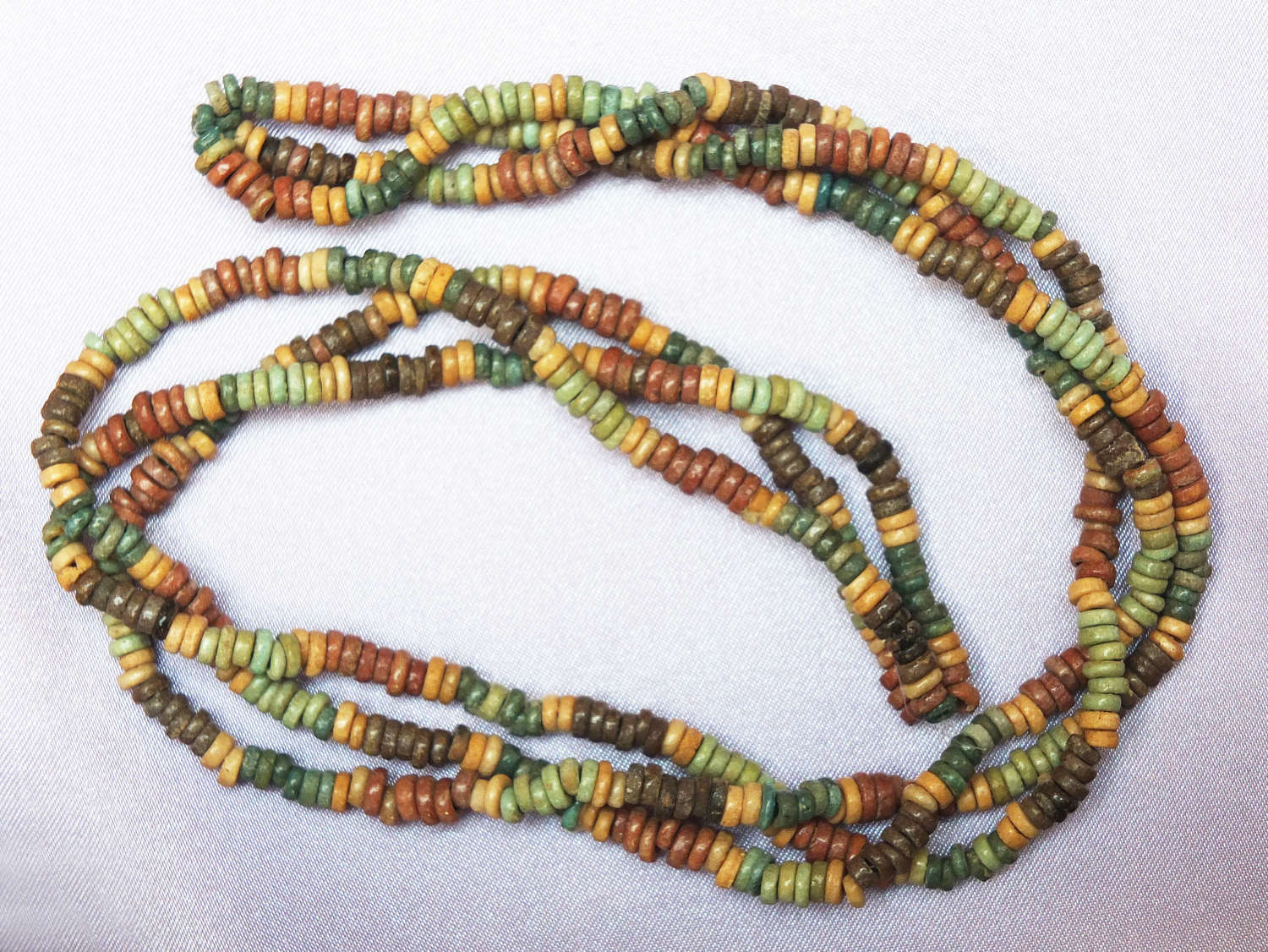
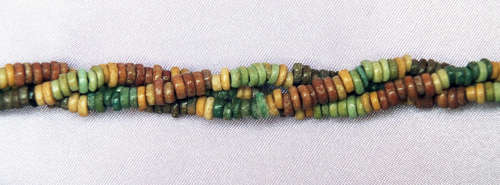
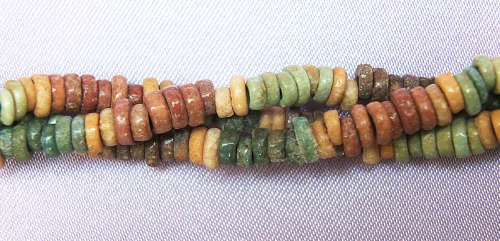
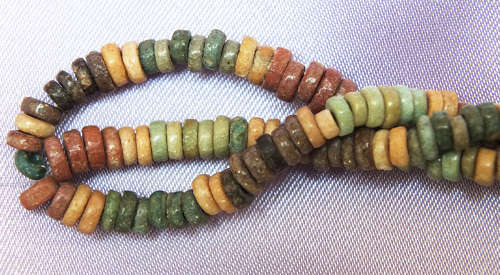
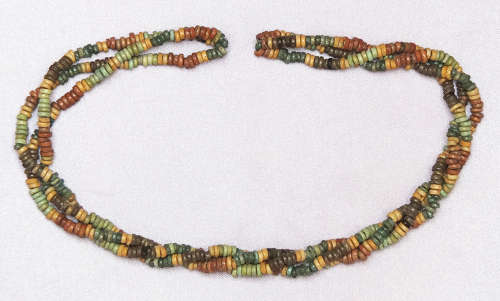
Code: 2527
Description: A restrung partially double-stranded necklace of faience and glass beads, short circular type, the beads coloured brown, orange, cream, blue, green and black, with the beads grouped in blocks of similar colour. The beads in good condition and a much longer string than is usually offered.
Size: The string measuring approximately 700 mm/27.5 ins. in length, and joined to make a wearable necklace. The beads measuring 3-4 mm/0.1 in. in diameter
Culture: Egyptian
Date: Late Dynastic Period, c. 1st Millennium B.C.
Provenance: From the collection of Julian Bird (1959-2014), and acquired at Lockdales, Ipswich, The Fine Sale (Auction 105), on 19 June 2013, as part of Lot 1137. At one time in the Llewellyn Phillips Collection, Cairo, Egypt.
Background: Julian Bird was a passionate collector of Egyptian antiquities, who built up a fine and extensive collection from the 1970s onwards. He sourced his items mainly from the UK market, from specialist dealers, fairs, markets and auctioneers. He was a model collector, carefully documenting his collection, and his notes on this particular item will be supplied to the buyer.
The collection of the physician Llewellyn Caractacus Powell Phillips (1871-1927) was formed in Egypt in the early years of the 20th Century. Llewellyn Phillips held a number of positions while resident in Egypt, including Professor of Medicine at the Egyptian Government School of Medicine, Cairo, and Senior Physician at Kasr-el-Aini Hospital, Cairo. In 1915 during the Gallipoli campaign he was appointed the Honorary Commander of the British Red Cross Hospital at Giza. He was mentioned in dispatches four times, and was awarded the Ottoman Order of the Medjidie, 3rd Class, and the Order of the Nile, 3rd Class. His collection was noted for Arab glass weights and coins and part of his collection was sold at Christie’s during 1992-1993; while part resides in the Egyptian Museum, Cairo. He donated seven coins to the British Museum in 1912.